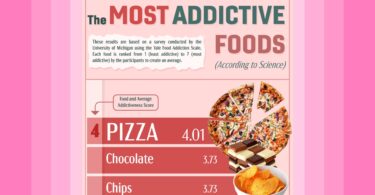
Why you should lose weight?
Obesity is a complex multifactorial disease chronic disease that develops from an interaction of social, behavioral, cultural, physiological, and genetic factors. The condition of obesity is chronic, relapsing and neurochemical and involves interaction between host and environment. Overweight and obesity increase the risk of chronic diseases, and impaired quality of life. According to the summery of the NHLBI(2005), the to evidence based recommendations suggests that weight loss is recommended (A) to lower elevated blood pressure in overweight and obese persons with height blood pressure: (B) to lower elevated levels of total cholesterol, low density lipoprotein cholesterol, and triglycerides, and raise low levels of high density lipoprotein cholesterol in overweight and obese persons with dyslipidemia: and (C) to lower elevated blood glucose levels in overweight and obese persons with type 2 diabetes.
Obesity increases the risk of following conditions like:
- Arthritis
- Diabetes
- Asthma
- Heart diseases and stroke
- Sleep apnea
- Blount’s disease etc
To avoid all such complications and to be healthy a person has to be cautious about his or her unusual weight gain.
How to achieve healthy weight loss
Role of Diet in healthy weight loss
A diet for weight loss would be reduced in total kilocalories but adequate in all nutrients. The diet should contain adequate protein, all essential vitamins and minerals, a small amount of fat, dietary fiber, and enough carbohydrate to prevent ketosis.
More specifically, the diet should provide at least 130 grams of carbohydrate, 25 to 35 grams of fiber, and contain all the essential nutrients. The meal plan should be one the person can follow. When behavior modification, nutritional counseling, and exercise recommendations support the meal plan, weight loss can be more successful. Sometimes people are unable to change their food intake so drastically. In this situation, people should make major behavioral changes in their eating habits slowly. Person should be encouraged to change to change to change only one or two negative food behaviors at a time. For a example if the nutritional counselor recommends that the person substitute skim milk for whole milk, it is not wise simultaneously discourage the use of sweets. The goal is to encourage permanent changes in eating behavior, so the person needs time to make the necessary adjustments. After the person has change negative behaviors associated with one food item or group, recommendations can be suggested to change negative behaviors associated with another food item or group. Changing a negative behavior usually take several weeks. Priority should be given to eliminating foods in the fat, milk, and meat lists that are high in fat and in which the person overindulges. An average woman will lose weight on a 1200-kilocalorie diet. Larger women and most men will lose weight on a 1500-kilocalorie diet
Role of Physical activity in healthy weight loss
Previous studies have suggested that rapidly increasing prevalence of obesity in recent decades may be largely due to increasing sedentary behaviors, perhaps to a greater extent than dietary excess. Physical activity should be part of a comprehensive weight lose therapy and weight maintenance program because it (1) modesty contributes to weight loss in overweight and obese adults, (2) may decrease abdominal fat, (3) increases cardiopulmonary fitness, and (4) may help with weight loss. The combination of reduced –kilocalorie diet and increased physical activity is recommended because it provides weight loss, decreased abdominal fat, and increases cardiopulmonary fitness. Initially, moderate levels of exercise for 30 to 45 minutes 3 to 5 days per week should be done. All adults should set a long term goal to accumulate at least 30 minutes or more of moderate-intensity physical activity on most, and preferably all, days of the week.
To identify those individuals at a major heart disease risk, a physician should screen all clients before exercise recommendations are made. People with known heart disease should have a physician-supervised stress test before beginning an exercise program.
When following an exercise program, fluid intake should be adequate. Individuals should drink water before, during and after exercise. Close attention should be paid to thirst to prevent dehydration. Four ounces of water every 15 minutes is usually sufficient. The thirst mechanism may not be adequate to prevent dehydration in many elderly persons and in individuals involved in heavy exercise during hot weather. Such persons need to drink water even if they are not thirsty.
Behavior modification techniques in healthy weight loss
Behavior modification is a useful adjunct when incorporated in to treatment for weight and weight maintenance. Behavior modification techniques mainly involve
Self monitoring
- Keep a food dairy and record all food intake
- Keep a weekly graph of weight change
- Keep an exercise diary
Stimulus control
- At home, limit all food intake in one specific place
- Plan food intake for each day
- Rearrange your schedule to avoid inappropriate eating
- Sit down at a table while eating
- At a party, sit a distance from snake foods, eat before you go, and substitute lower kilocalorie drinks for alcohol.
- Decide beforehand what you will order at a restaurant
- Save or reschedule everyday activities for times when you are hungry
- Avoid boredom; keep a list of activities on the refrigerator
Slowed-down eating
- Drink a glass of water before each meal. Drink sips of water between bites of food.
- Swallow food before putting more food on the utensil
- Try to be the last one to finish eating
- Pause for a minute during your meal and attempt to increase the number of pause.
Cognitive strategies
- View exercise as a means of controlling hunger
- Practice relaxation techniques
- Imagine yourself ordering a side salad, diet dressing, low fat milk, and a small hamburger at a fast food restaurant.
- Visualize yourself enjoying a fresh apple in preference to apple pie.


